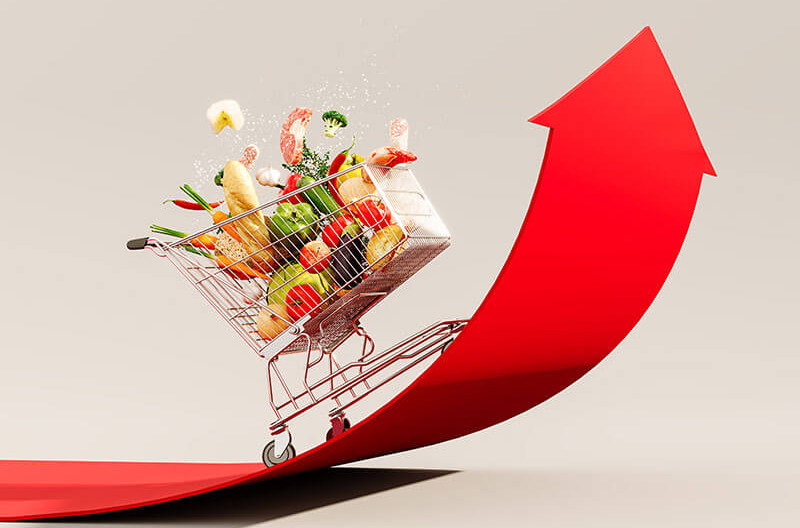IRI has released a new report, October Price Check: Tracking Retail Food and Beverage Inflation, with insights regarding food inflation and its impact on consumer shopping behavior.
The report leverages point-of-sale data for October and includes data across U.S. food channels, including grocery, drug, mass market, military commissaries, select club and dollar stores, as well as e-commerce.
The latest data shows that food and beverage prices in October increased by 1.4 percent compared to September. Versus a year ago, overall food inflation has stabilized in the past three months. However, consumers are using multiple tactics to reduce spending in pressured times, such as switching to private labels, trading out of expensive food categories and trading down to mainstream and value brands, consuming more at home versus away from home.
“As overall food inflation continued to increase from September, consumers are trading down on several products such as detergents and frozen meals, and are moving to value items,” said Krishnakumar “KK” Davey, president of thought leadership for CPG and retail.
“With the holidays approaching, shoppers are being mindful of their budgets and are looking for value. Yet, we do see some segments of consumers continuing to pay a premium for differentiated or new products. Some shoppers buy larger packs, despite higher prices, in order to get good value for money.”
IRI is monitoring consumer behavior and will provide continual updates to ensure retailers and manufacturers have the most up-to-date insights they need to prepare for large gatherings.
Key insights from the October inflation report include the following:
- Inflation varies across the store:
- Within the store, the perimeter, including produce and deli, has seen inflation moderate to 8.4 percent compared to the year-ago period, while center store inflation, including snacks, frozen meals and other frozen foods, has risen every month in 2022 and is at 14.9 percent compared to the year-ago period.
- Fresh meat and seafood and alcohol segments are only up 4.5 percent and 5.5 percent compared to the year-ago period, while other categories, such as dairy, frozen meals and other frozen foods, are up.
- Halloween candy prices spooked consumers: Seasonal Halloween candy prices increased 13.5 percent compared to the year-ago period, while volumes are down 2 percent compared to the year-ago period due to more significant declines in the more expensive chocolate segment.
- Thanksgiving will be expensive: Price inflation for the Thanksgiving meal is up 13.7 percent compared to the year-ago period, driven by pies and side dishes, up 19.6 percent and 18.8 percent, respectively, while protein is up 9.7 percent compared to the year-ago period.
- Consumers are reducing their consumption in some food and beverage segments due to rising prices: Volumes are down more than 10 percent in categories such as frozen poultry, deli service lunchmeat, frozen dinners and shelf-stable dinners, due to price increases.
The details of these findings are included in IRI’s October inflation report, published here.

